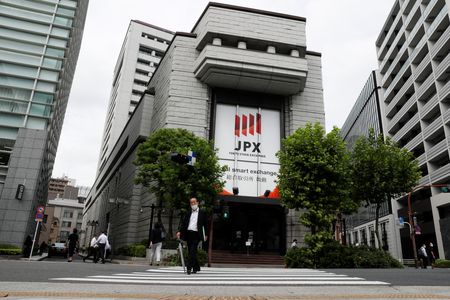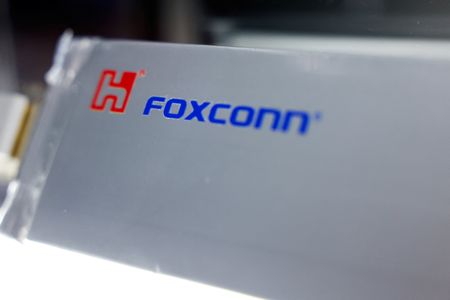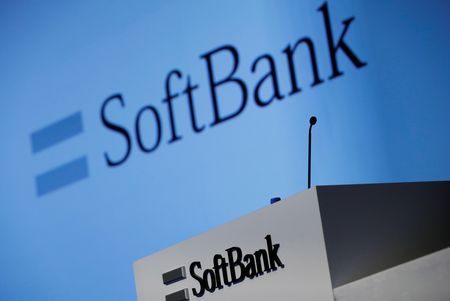By Jamie McGeever
ORLANDO, Florida (Reuters) -Wall Street experienced a wild rollercoaster ride on Thursday, opening sharply higher on another set of strong results from artificial intelligence giant Nvidia, only to end deep in the red as investors reassessed that optimism and mixed signals from the first U.S. jobs data since the government shutdown ended.
In my column today I look at the warning signs that Nvidia’s results flagged, which may deepen the skepticism around tech and AI that has emerged in recent weeks. It all goes back to whether the vast investment in AI infrastructure will ultimately turn a profit.
If you have more time to read, here are a few articles I recommend to help you make sense of what happened in markets today.
1. Tipping point or bubble? Nvidia CEO sees AItransformation while skeptics count the risks 2. Nvidia’s fantastic rise triggers VC hubris signal 3. U.S. posts solid job gains in September but unemploymentrate rises to 4.4% 4. Fed officials eye financial stability as they debatenext rate move 5. Fed’s “lighthouse” may not allow it to dock: Mike Dolan
Today’s Key Market Moves
* STOCKS: Solid gains in Asia, modest gains in Europe,losses in the U.S. Nasdaq -2.2%, S&P 500 -1.6%. VIX index hashighest close since April. * SECTORS/SHARES: U.S. tech -2.7%, PhiladelphiaSemiconductor Index -4.8%, consumer staples the only gainer,+1.1%. Nvidia -3.2%, Micron Technology -11%, AMD -8%. Walmart+6.5%. * FX: Dollar index ends flat but not before brushing upagainst six-month high. Yen at fresh lows but trims losses.Bitcoin -5% to new seven-month low below $86,000. * BONDS: Short-dated U.S. yields fall as much as 6 bps,bull steepening the curve. December rate cut probability up to40%. * COMMODITIES/METALS: Oil slips a bit, gold littlechanged.
Today’s Talking Points
* Well, that didn’t last long
Wall Street’s price swings on Thursday were historic. The S&P 500 opened up almost 2%, only to close 1.6% lower. Analysts note that the index rarely ends down as much as that after opening so strongly. April 2020, after the pandemic crash, and April this year, following the “Liberation Day” crash, are two recent examples.
But in both these instances, the market was around 20% off its then-highs, so had plenty of room to recover. Now, the index is barely 5% off its October 29 peak, an indication there may be more downside potential. We could be at an inflection point – the S&P 500 and Nasdaq both closed right on their 100-day moving averages.
* U.S. jobs fog gets thicker
Everyone craved the release of U.S. economic indicators – especially the jobs numbers – to lift the data fog, but the September payrolls report on Thursday has only muddied the picture even more.
The unemployment rate rose to a four-year high of 4.4%, but job growth was a strong 119,000, especially when the “breakeven” level is around 50,000 or less. On the other hand, the rolling pace of job growth recently is the lowest this century outside recessions. On top of that, October’s payrolls will now be combined with November’s data and released on December 16, after the Fed’s next meeting.
* Safe haven, where art thou?
Given how choppy U.S. stock markets were on Thursday – a historic peak-to-trough swing and the highest VIX close since April – the lack of any real rally in the traditional “safe haven” assets is intriguing.
Gold and the Swiss franc ended the day flat, the yen fell to new lows, while U.S. Treasuries rose in price but not by much – the ten-year yield only fell 3 basis points. Friday’s session will be illuminating, as investors close out a bruising week and position for next week which will be marked by the U.S. Thanksgiving holiday and month-end positioning.
Nvidia beat may yet stir fear on the Street
Nvidia once again delivered a resounding earnings ‘beat’ on Wednesday, which may initially dampen some of the smoldering tech bubble fears. But, paradoxically, the $5 trillion company’s latest figures actually highlight many of the AI concerns that have been roiling markets recently.
On the surface, the headline numbers are astonishing. The chipmaker’s revenue in the third quarter was a record $57 billion, up 62% from a year earlier, and net profit rose 65% on the year to a record $32 billion.
Nvidia’s forecasts are even more bullish, with revenue expected to rise to $65 billion in the fourth quarter, higher than analysts’ average estimate of around $62 billion. Figures like that suggest the global artificial intelligence leader’s cash-generating powers are as strong as ever.
Nvidia’s shares jumped 5% in extended trading after the market close on Wednesday, adding around $225 billion to the firm’s market cap in a matter of minutes.
“Blackwell sales are off the charts, and cloud GPUs are sold out,” CEO Jensen Huang said, referring to two types of Nvidia chips. “AI is going everywhere, doing everything, all at once.”
That’s pretty exuberant language for a press release. And considering the growing fears about AI capex indigestion, it may be bordering on irrationally exuberant.
TOO MUCH INVESTMENT?
The key issue is simple: the tens of billions of dollars of revenues Nvidia is raking in every quarter are tens of billions of dollars its customers are spending, with little indication of when – if ever – all this investment will be profitable.
Huang repeated on Wednesday that Nvidia has $500 billion in bookings for its advanced chips through 2026. That’s half a trillion dollars of AI hardware investment.
What’s more, four customers accounted for 61% of Nvidia’s sales in the third quarter, up from 56% in the second. That suggests increased concentration risk for Nvidia as well as the chip buyers.
These are big bets. The eventual productivity gains may be enough to make the outlay worth it. But we won’t know for a while, and the bigger the spend, the higher that bar for profitability and the greater the risk that investors will grow impatient.
Indeed, their patience already appears to be wearing thin. Bank of America’s November fund manager survey shows respondents overwhelmingly believe the most crowded trade right now is ‘long’ Magnificent Seven shares, and the biggest tail risk is an AI bubble.
FUND MANAGERS UNITE ON AI RISK
Were Nvidia’s results strong enough to sustain its initial 5% share price spike and stifle concerns about its customers’ ability to continue pouring billions into AI?
Looking at the past seven quarterly earnings reports, the average Nvidia share price move in the two days following the release has been a rise of 1.8%. Momentum is waning though. The biggest increase – a whopping 16% – was in February last year, and the average two-day move following the three releases this year has been a decline of almost 3%.
Of course, those declines pale in comparison to the shares’ stratospheric rise. Nvidia became a $4 trillion company in July, only to see its market cap jump another trillion dollars in a mere three months.
But some high-profile shareholders have cashed out recently, with Japan’s SoftBank and tech billionaire Peter Thiel’s hedge fund ditching their Nvidia stakes during the third quarter. And the chipmaker’s shares have slid more than 10% since peaking on October 29, helping to take some of the fizz out of the wider tech boom.
Will Nvidia’s latest results spark a sustainable ‘buy the dip’ rebound, or deepen those bubble concerns? We’ll soon find out.
What could move markets tomorrow?
* Japan, UK, euro zone, U.S. PMIs (November, flash) * Japan inflation (October) * Japan trade (October) * UK public finances (October) * UK retail sales (October) * Bank of England chief economist Huw Pill speaks * ECB President Christine Lagarde and Vice President Luis deGuindos speak at separate events * Canada retail sales (September) * U.S. University of Michigan consumer, inflationexpectations (November, final) * U.S. Federal Reserve officials scheduled to speak includeNew York Fed’s John Williams, Boston Fed’s Susan Collins, DallasFed’s Lorie Logan, Governor Michael Barr, and Vice Chair PhilipJefferson
Want to receive Trading Day in your inbox every weekday morning? Sign up for my newsletter here.
Opinions expressed are those of the author. They do not reflect the views of Reuters News, which, under the Trust Principles, is committed to integrity, independence, and freedom from bias.
(By Jamie McGeever; Editing by Nia Williams)










